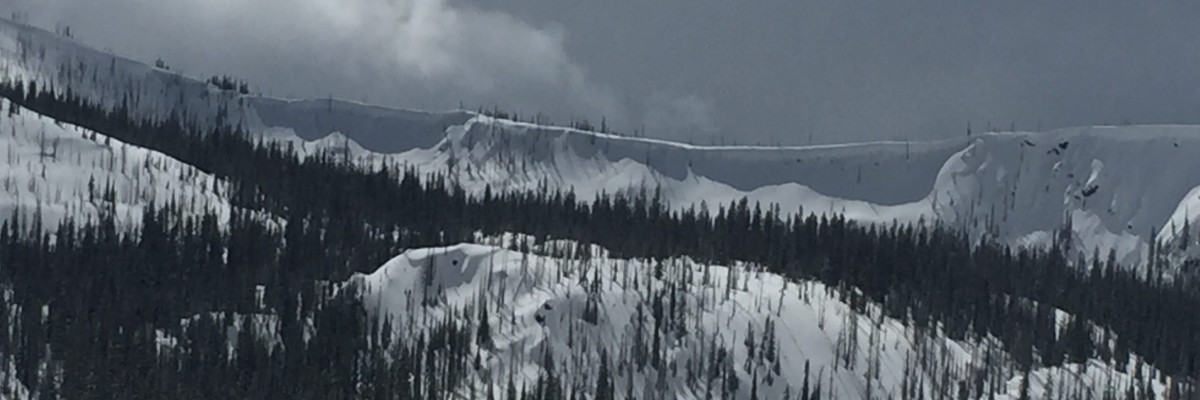The current avalanche danger is MODERATE in the west central Montana backcountry. Human triggered avalanches are possible. Heightened avalanche conditions exist in isolated terrain. Evaluate snow and terrain carefully and identify features of concern.
Good morning, this is Travis Craft with the West Central Montana Avalanche Center’s avalanche advisory for March 29, 2016. This danger rating does not apply to operating ski areas, expires at midnight tonight and is the sole responsibility of the U.S. Forest Service.
Weather and Snowpack
Mountain temperatures range from 19 F to 27 F in the region. Winds are 19 mph with gusts of 30 mph out of the NNE in the Bitterroot. At Point Six in the northern part of the advisory area winds are 21 mph with gusts of 44 mph out of the ENE. The advisory area received no new snow overnight. The region picked up 3 new inches of snow in the last 48 hours.
Tim and I took the sleds to the Lolo Pass area yesterday. The primary avalanche problem is loose dry avalanches on shaded aspects and loose wet avalanches on sun exposed aspects. Conditions can change quickly in the spring and are very elevation specific. It feels like winter on the high ridges and as you go down in elevation it feels like spring.
The second avalanche problem is the persistent slab that is failing on facets that sit on the last melt freeze crust. This layer propagated in our tests on shadier aspects yesterday. These facets are reactive on some slopes. The way to identify this layer is to dig a pit a meter into the snowpack and see if it is reactive in your tests before committing to a steep slope.
The final avalanche problem is cornice failure. The cornice are very large right now and with warming temperatures in the afternoon are weakening. Give them a wide berth.
Weather and Avalanche Outlook
We will have moderate temperatures for the next couple of days with a possibility of picking up small amounts of snow. The region will experience high winds the next couple of days. The avalanche danger with these conditions should stay the same. Remember in the spring, conditions can change rapidly. With the strong winds there is new snow available for transport. I would look for leeward terrain to have wind slabs formed on it.
Ski and ride safe. Logan will issue the next advisory on Thursday.














